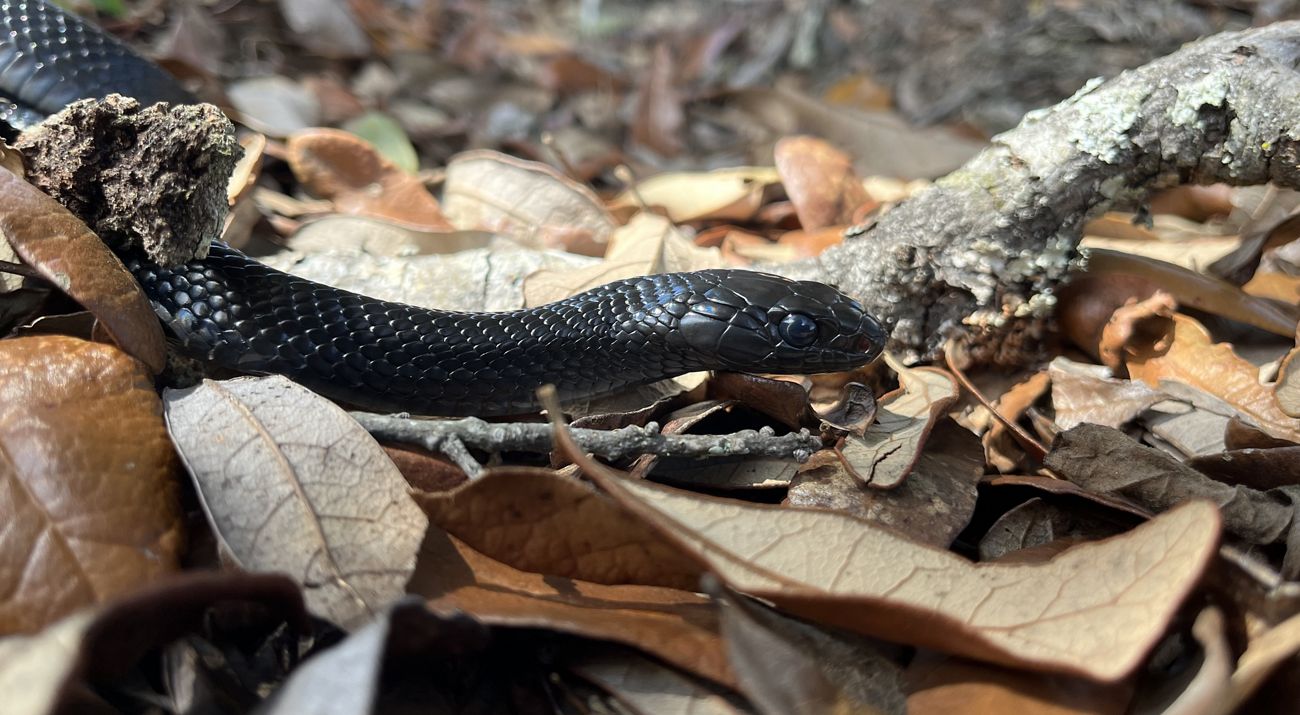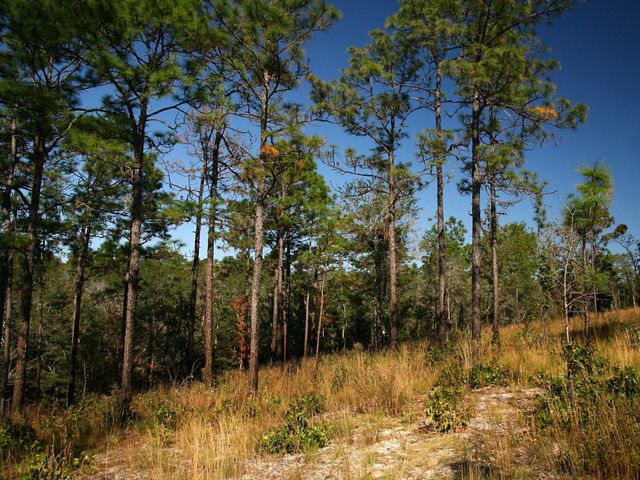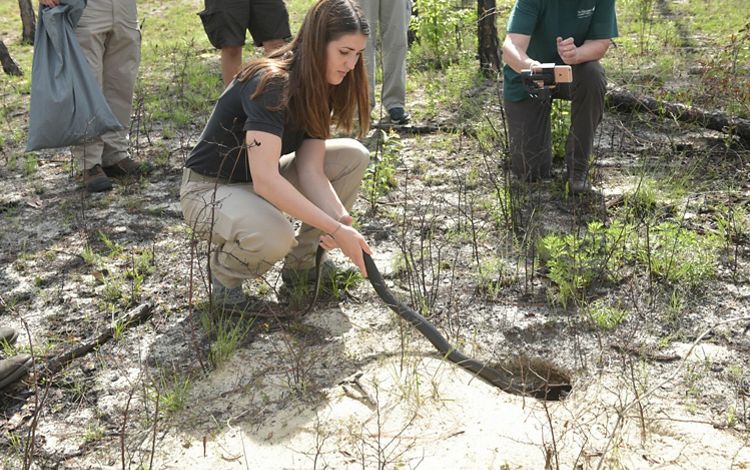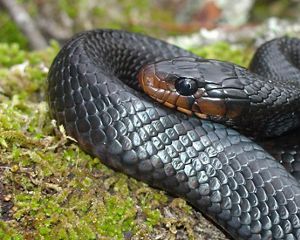
The Eastern Indigo Snake Returns
Absent for 35 years, this apex predator is back, thanks to collaborative species recovery efforts at TNC’s Apalachicola Bluffs and Ravines Preserve.
The longest snake native to the United States, the eastern indigo snake can grow up to 8.5 feet long. The apex predator is sleek as a stair banister, with conspicuous black-blue scales. A daytime hunter, it was once a common sight throughout Florida, Georgia, southern Alabama and southeastern Mississippi.
By 1978, however, its numbers had so drastically declined in part due to habitat loss and fragmentation that it was designated as federally threatened and were last spotted at TNC’s Apalachicola Bluffs and Ravines Preserve (ABRP) in 1982. That was until dedicated scientists set out to change the course of history for the indigo, creating a bright future for the species at the preserve.
To bring back this critical reptile, TNC and partners began a captive breeding program in 2017, raising and releasing snakes at ABRP. Since then, the program has met major milestones on the path towards our goal of reestablishing the species within ABRP and the surrounding areas.
In 2023, two hatchlings were found at ABRP. The discovery marked an exciting milestone and is a testament that the release program is working.

Eastern Indigo Snake Recovery in Florida
A Story of Restoration and Recovery
The eastern indigo snakes begin their journey in human care, where scientists prepare them for a life in the wild. Every year, snakes are bred, born and raised by Central Florida Zoo’s Orianne Center for Indigo Conservation (OCIC). After a year, they are transferred to the Welaka National Fish Hatchery for an additional year in preparation for their release.
While each snake only has to wait two years before it is ready for the wild, TNC has spent nearly four decades preparing this preserve for them. Apalachicola Bluffs and Ravines Preserve was not an arbitrary choice for the reintroduction of the eastern indigo snake. After 35 years of restoration efforts by TNC and our partners, the preserve is now the ideal habitat for the snakes. As we restored the longleaf pine landscape, other native species like the gopher tortoise increased. To fully balance the ecosystem at ABRP, the only missing piece left was the eastern indigo snake.
Indigo Snakes Release



Measuring Progress
How do scientists know if eastern indigo snakes are thriving at Apalachicola Bluffs and Ravines Preserve? With close monitoring. Each reintroduced eastern indigo snake has a Passive Integrated Transponder (PIT) tag implanted prior to release. The tags help scientists identify the individual snakes during surveys to better measure the status of the reintroduced population, reproduction, and the distance the snakes cover.
In the first three years of the effort, Auburn University’s Alabama Natural Heritage Program conducted onsite monitoring of the reintroduced snakes, including the initial 32 snakes which were released with radio transmitters, allowing researchers to track the animals’ movements. One of the eastern indigo snakes that was released in 2017 traveled over a mile from where it was initially released.
Along with traditional foot surveys to search for snakes at ABRP, OCIC’s Michelle Hoffman and team detect passing eastern indigo snakes using trail cameras at the mouths of tortoise burrows and at intersections of drift fence arrays. Trail cameras have taken thousands of photos of eastern indigo snakes in various locations. Automatic PIT (Passive Integrated Transponder) tag scanners detect individuals as they pass through some of the drift fence arrays.
The hatchlings discovered in 2023 mark a major milestone. Their presence and health confirm that the previously released eastern indigo snakes are doing well and successfully reproducing in the healthy, restored habitat of the preserve.

We Can’t Save Nature Without You
Sign up to receive monthly conservation news and updates from Florida. Get a preview of Florida's Nature News email.
All About Indigo Snakes
The eastern indigo snake is an iconic and essential component of the now rare southern longleaf pine ecosystem. It serves a critical function to balance the wildlife community by consuming a variety of small animals including both venomous and non-venomous snakes.
When identifying the eastern indigo, look for the following characteristics:
- bluish black in color, appearing iridescent purple/blue in sunlight
- orange-red on the chin, sides of the head and throat
- males commonly reach 7–8 feet in length, females are slightly smaller
- new hatchlings are 16-24 inches long
- produces annual clutches of 6–12 eggs, Indigos may travel up to three miles during warmer seasons in search of new habitat and prey.
Apalachicola Bluffs and Ravines Preserve is home to the gopher tortoise, whose long and deep burrows are home to many species, including eastern indigo snakes. Located along the Apalachicola River, the preserve lies in the center of one of five biological hotspots in North America and is home to a great number of imperiled plants and animals. The preserve is a lush mosaic of habitats, covered with forested with pines, steep ravines and streams and mile after mile of wiregrass. As a TNC Center for Conservation Initiatives campus preserve, ABRP serves as a living laboratory for the development of restoration techniques and land management excellence.











